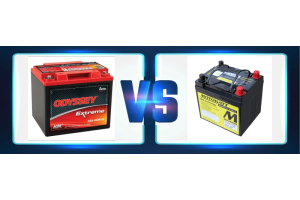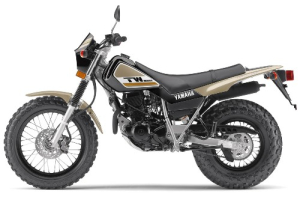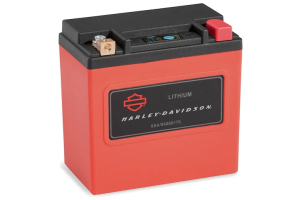Proper Care and Keeping for Mobility Scooter Batteries
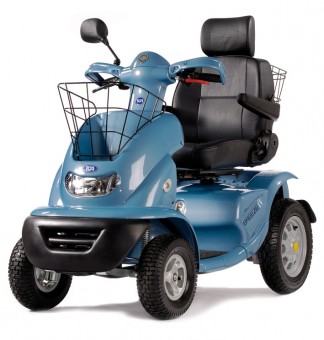 Knowing how to properly charge and maintain your powered wheelchair or mobility scooter batteries is vitally important. For many, these electric powered chariots, as one customer so eloquently described them, provide independence and are a necessary part of everyday living. So when dead or dying batteries are encountered, it is more than an inconvenience; it is a world on hold event! Our goal today is to provide some basic battery charging tips and some simple tests that can be performed to diagnose a bad battery. We will also share a few other nuggets of wisdom that may help debunk some battery myths you may have come across in your travels and hopefully provide some preventative medicine so to speak.
Knowing how to properly charge and maintain your powered wheelchair or mobility scooter batteries is vitally important. For many, these electric powered chariots, as one customer so eloquently described them, provide independence and are a necessary part of everyday living. So when dead or dying batteries are encountered, it is more than an inconvenience; it is a world on hold event! Our goal today is to provide some basic battery charging tips and some simple tests that can be performed to diagnose a bad battery. We will also share a few other nuggets of wisdom that may help debunk some battery myths you may have come across in your travels and hopefully provide some preventative medicine so to speak.
Battery Basics: Build a Solid Foundation
Difference between AGM and Gel Batteries
To build a sturdy house we must first have a solid foundation, right? So before I can go any further, I need to clear the air and confront a major misconception. Let me first start by saying there IS, I repeat IS a DIFFERENCE between AGM and GEL batteries! It is mind-boggling how many scooter manufacturers, mobility reps, scooter repair men, so called battery specialists and of course consumers tend to use the words AGM and Gel interchangeably. Let me assure you, they are different! Knowing the difference will save you much heartache and will keep money in your pocket.
Most people, when talking about sealed lead acid (SLA) batteries, incorrectly refer to them all as gel batteries. I get it. Gel is a word that we are all familiar with and are more comfortable saying. We have some sort of childhood context or framework that helps project a familiarity upon the unfamiliar battery world. Jumping to the other side of the tracks, how are you supposed to remember an acronym like AGM especially if you were never aware of its existence anyway? By default and out of pure ignorance you are going to wind up asking for a gel battery; it’s what makes sense. It’s what everyone else seems to ask for. Well, ignorance can no longer be your guide. Today you will learn the difference and gain confidence knowing your foundation going forward is solid!
Both Gel and AGM batteries are considered to be sealed lead acid (SLA) or valve-regulated-lead-acid (VRLA) batteries. They are also both spill-proof maintenance free batteries where you never have to add electrolyte or worry about acid spillage. But that is where the similarities end. Absorbed Glass Mat or AGM batteries have a porous sponge like material that absorbs all the free flowing acid. This design creates more surface area for the acid to interact with the active lead material. The gel batteries introduce a silica powder into the battery that jellifies the electrolyte in and around the plates and interior walls.
AGM batteries are considered the superior type because they are less prone to suffer irreversible damage from overcharging. Gel batteries develop air pockets or bubbles that lead to pre-mature plate burnout. AGM batteries are far more reliable at low temperatures and perform better under high discharge rates.
Why is this important to you and your scooter batteries? It is really quite simple. The charge profile for AGM and Gel batteries is different. So if your scooter came with sealed AGM batteries and you replaced them with Gel batteries you would be perpetually over-charging your batteries and shortening their life span. The reverse is also true. If your scooter came with Gel batteries and you replaced them with sealed AGM batteries you would be perpetually under-charging them and shortening their life span.
Ok, so you bought your Pride scooter used or you’ve had the motorized wheelchair so long you don’t remember what type of battery originally came with it. How do you know there may be an issue? Generally speaking, if you find yourself replacing your batteries every 1-2 years (or even more often) you may have incorrect batteries paired with your charger (Yes, there could be other issues occurring if you are replacing batteries often). Well maintained batteries should be able to last 3 to 5 years in this type of usage atmosphere. Just so you know most scooters come with the sealed AGM batteries.
Charging Tips and Charging Rumors
A large percentage of people ask if they should wait to charge their batteries until they are fully drained. There seems to be this idea out there that the batteries will suffer from some sort of a memory effect or they are allowed a finite number of charge cycles. To answer this myth plainly: NO it is NOT best to always wait until the batteries are fully discharged before deciding to charge them. The BEST practice is to connect the charger whenever you are done using the batteries.
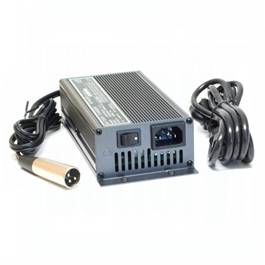 Let’s tackle the finite charge cycle question first. Most households probably drive their car at least once a day, right? Every time you get in the vehicle the alternator charges up the battery right? Some would [rightly] say there are only 400 cycles in a lead acid battery [under the right conditions]. So if there are a finite number of charge cycles and every charge occurrence is considered one cycle regardless of how deeply discharged then why do car batteries last well beyond one year? There is obviously something flawed in their argument. Depth of discharge is important. Many factors impact the longevity of the battery. You could have thousands of charge cycles if the battery is routinely discharged by say 10% before being recharged. A battery discharged by nearly 50% every time will not have the same number of charge cycles as the one only discharged to 10%. The actual number will be quite a bit smaller. So a fact that pertains to one condition does not make it a fact in all situations.
Let’s tackle the finite charge cycle question first. Most households probably drive their car at least once a day, right? Every time you get in the vehicle the alternator charges up the battery right? Some would [rightly] say there are only 400 cycles in a lead acid battery [under the right conditions]. So if there are a finite number of charge cycles and every charge occurrence is considered one cycle regardless of how deeply discharged then why do car batteries last well beyond one year? There is obviously something flawed in their argument. Depth of discharge is important. Many factors impact the longevity of the battery. You could have thousands of charge cycles if the battery is routinely discharged by say 10% before being recharged. A battery discharged by nearly 50% every time will not have the same number of charge cycles as the one only discharged to 10%. The actual number will be quite a bit smaller. So a fact that pertains to one condition does not make it a fact in all situations.
Discharged lead acid batteries allow sulfate crystals to grow and strangle a batteries performance. When left in this state it becomes harder and harder for the natural charging process to remove and reverse this condition. You will notice that you cannot go as far as you once were able to travel when this loss of capacity occurs. Charging as soon as possible after use and then leaving the smart charger connected to your scooter while it is not in use is your first line of defense against this sulfation concern.
If you were wondering which type of battery has the memory effect, it is the rechargeable NiCad. You know the old AA and AAA type batteries and some specialty equipment batteries. For the most part, NiCad batteries have been replaced by NiMH or lithium batteries.
Battery Maintenance Tips
Guys you probably noticed (Yes, sorry I am being stereo-typically sexist) after a few season of using your riding mower things seem to raddle loose. Not to mention you need to grease moving parts and clean out some of the nooks and crannies. The same holds true with your electric powered wheelchairs and mobility scooters.
Looking at the battery specifically, you can imagine that a loose connection could give the impression there is a battery issue. In truth it could temporarily create a battery issue, but this is generally fixable and may simply require a parallel charge. (We did a post on parallel charging for motorcycle batteries a while back. The same principle would apply here if you want to read about it.) Far too many people get taken advantage of and are told they have bad batteries when all that was the matter was a connection came loose. So check your batteries connections periodically.
This last battery maintenance tip often gets overlooked or dismissed as unnecessary. I can assure you that no one, that is zero of my customers that have implemented this suggestion have ever regretted it. Most call me up, 4, 5, 6 7 years later and thank me for sharing such an easy way to save money on replacement batteries. Some call back sooner to see what other options we have for their car, boat, motorcycle, RV, etc. since it worked so well for their scooter!
 Installing an on-board desulfator is quick and easy and will address the #1 killer of SLA batteries: SULFATION. This tiny device sends a pulse frequency into the battery that resonates on those sulfate crystals and prevents them from growing and taking over the insides of your battery. They can extend the useful life of your battery bank 2-3x longer than battery banks without one.
Installing an on-board desulfator is quick and easy and will address the #1 killer of SLA batteries: SULFATION. This tiny device sends a pulse frequency into the battery that resonates on those sulfate crystals and prevents them from growing and taking over the insides of your battery. They can extend the useful life of your battery bank 2-3x longer than battery banks without one.
The PP-24-L at 4 x 1.75 x 1” fits snugly atop your batteries or down the back side. It is best used on scooters that use two 12 volt 18 amp hour (12V 18Ah) or larger sized batteries. The vast majority of full sized scooters use the two 12V 35Ah batteries. This 24V desulfator made by PulseTech attaches using the same nut and bolt used to connect the scooters wiring to your batteries. Sadly, it is not recommended for scooters with smaller 12V 12Ah or 12V 8Ah scooters like many of the GO GO scooters are powered by. Those batteries use a push-on-tab type of terminal vs. a nut and bolt style.
| Recap: How to Maximize Performance and Lifespan of Scooter Batteries | |
|---|---|
| #1 | Make sure you have the correct battery type that matches your charger. |
| #2 | Charge your batteries as soon as possible after use. There is no need to wait for them to become fully discharged. |
| #3 | Leave the smart charger connected to your batteries whenever you are not using your scooter. |
| #4 | Periodically check your connections and hand tighten / clean as needed. |
| #5 | Consider attaching an on-board desulfator to fight sulfation and extend battery life. |
Do you remember the old saying, “An ounce of prevention is worth a pound of cure”? Well when it comes to batteries it is absolutely true. It's easier to stop something from happening in the first place than to repair the damage after it has happened.
How about this saying, “The definition of insane is doing the same things over and over and expecting different results.” If you have been replacing batteries often, perhaps it is time to change your routine and try some of these tips for proper care and keeping of your “chariots” batteries. Let us know if you have more tips or simply want to share your success stories after you changed your routine. We would love to hear them and I now others would to!

